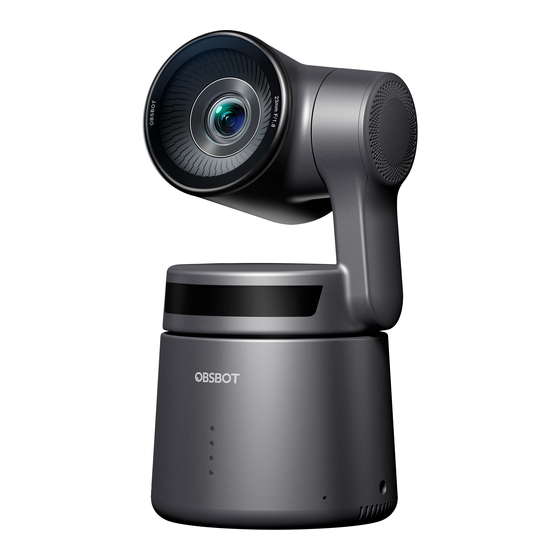
Table of Contents
Advertisement
Quick Links
Advertisement
Table of Contents

Summarization of Contents
Introduction
Purpose of the Manual
Operation guide for OBSBOT Tail Air and Obsbot Start APP, detailing device components and software modules.
Product Definition
Defines OBSBOT Tail Air as an Al streaming camera for live streaming and lists its core software functions.
Overall Design
Hardware Description
Describes the device's power button functionality and associated lights/sounds for user feedback.
Software Structure
Outlines the software's role in managing camera data, equipment control, and video transmission.
Conditions and Restrictions
Specifies compatibility requirements for iOS (12+) and Android (8.0+) devices.
Function Detailed Description
Hardware Function Description
Details the operational functions of the device's hardware components like buttons, interfaces, buzzer, and lighting.
Buttons
Explains button operations: power on (3s), sleep (3s), shutdown (10s), and power display (single press).
Interface Description
Describes device interfaces: Type-C, HDMI micro, AUX, SD card slot, and dual microphones for connectivity.
Buzzer Function
Details buzzer sounds for low battery/sleep and error messages, including their patterns and priority.
Lighting Function
Explains lighting states: Solid (battery), Breathing (brightness), and Horse racing (LED sequence).
Software Connection
Details OBSBOT Start connection via LAN, Bluetooth, STA (Wi-Fi), and AP (cellular data).
Connection Function Description
Explains connection types: wired/wireless LAN, Wi-Fi, and cellular data hotspot.
User Permission Description
Describes mobile phone connection limits: one device per app, multiple devices searchable.
Shooting Screen
Describes the shooting screen interface and how to switch output views within the app.
Shooting Screen Function Description
Explains entering the shooting screen post-connection and switching output by screen clicks.






Need help?
Do you have a question about the OSB-2108-CW and is the answer not in the manual?
Questions and answers